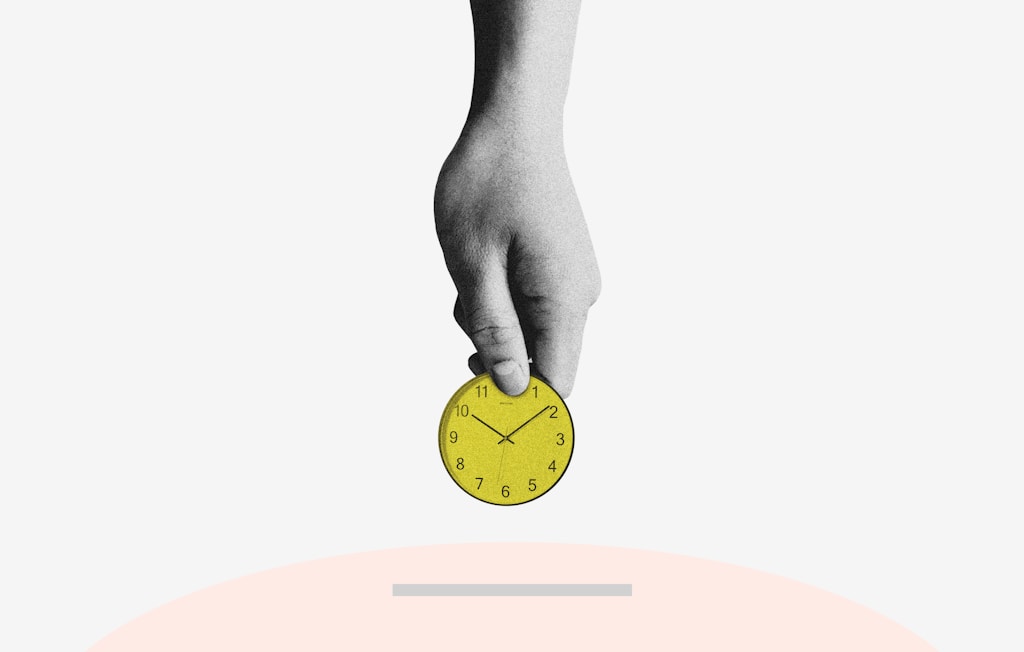Trying to buy happiness itself is unlikely to work, but changing the way you spend and consume can help you to get more of it
No one gets into creative work for the money. However, as I started to discuss last week in my How to spend money piece, the resulting limitations on our funds mean we need to be smarter-than-average when it comes to our spending. This means it needs to make us as happy as possible for as long as possible. So how can you buy happiness?
Elizabeth Dunn and Michael Norton are two US academics who spent years researching the impact of different spending approaches on people’s happiness levels. Dunn, a professor of psychology at the University of British Columbia and Norton a marketing professor at Harvard Business School, eventually recorded their ideas in a helpful book entitled ‘Happy Money’.
I stumbled across ‘Happy Money’ when I was working in my local library and I’ve since found it really useful in helping me to reframe spending decisions.
‘Happy Money’ resists the temptation to get preachy, which means it does not trigger my internal ‘f***-off!’ sensor

It’s an impressive book because, although there’s a substantial amount of research behind their recommendations, it reads in a very straight forward, useful fashion. It also resists the temptation to get preachy or dogmatic, which means it does not trigger my internal ‘f***-off!’ sensor.
Want to make sure you never miss a post?
Sign up to the Creative Money newsletter!
Let me read it first >
Inside, they identify five key principles of happy money. You can learn more about them below, but the book goes into much more detail and has loads of compelling evidence and useful examples to back it all up. As such, I really recommend you consider reading ‘Happy Money’. You can buy it over on Amazon or, even better, drop by your local library (when possible).
1) Buy experiences

Buying experiences instead of stuff usually makes us happier and in a more lasting way.
Cleverly-marketed shiny things are designed to persuade you to buy a lifestyle by purchasing a product. We want that positive change – it’s part of process called ‘self-actualisation’ (an awful term for the process of trying to become the person we want to be) – and advertisers are very good at telling us that buying their stuff will get us there.
Look to buy experiences that match Dunn and Norton’s criteria. You’ll be happier for it

The problem is that it usually does not. Just look at the scores of high-earners who find the big house and the statement car to be somewhat hollow victories, once acquired.
A sense of self
Instead, Dunn and Norton cite a Cornell study that shows how things like travel, theatre trips, gallery visits and dinner with friends come to define their subject’s sense of self much more than their purchases.
Interestingly, when given the option to go back in time and change one of these purchases for an alternative, those who had bought an experience were much more likely to stick with their initial decision.
This makes sense to me. In my role as a music journalist, I’ve often heard musicians say as much: “There’s nothing I’d change, it all made me who I am…” etc. Indeed, it happens so often that I’ve written it off as a crap question.
Notably, Dunn and Norton say experience-based spending proves even more satisfying when it…
- brings you into contact with other people
- results in good stories
- is linked to the ideas you have about who you want to be
- is in some way unique
Resist the urge to buy the shiny thing whenever you can and instead look to buy experiences that match Dunn and Norton’s criteria. You’ll be happier for it.
2) Make it a treat

Being conscious of what you consume and spacing-out (or varying) the good stuff allows you to gain more enjoyment from it.
Have you ever been round the likes of Borough Market in London (or any farmers market/purveyor of posh produce) where they divvy out free samples?
You try a sliver of cheese and, suddenly conscious of the flavour, it tastes phenomenal. Four hours later, on the sofa, you can be ladling fat wedges of barrel-aged cheddar into your gob in front of Netflix and feel only a fraction of the joy. The more you consume, the less benefit you experience.
Diminishing returns
This is the psychological effect to look out for and that Dunn and Norton say justifies their ‘make it a treat’ approach. That aforementioned owner of the big house and statement car will find it stops making them happy because they soon get used to it. It’s the same with most things in our lives – and even our lives themselves.
Identify the good things and savour them by limiting consumption and being more conscious of them

A bit of mindfulness helps here, the authors say we should identify the good things and savour them by limiting our consumption and being more conscious about enjoying them.
So, if fancy cars really matter to our hypothetical ‘high-earner’, they might be happier buying something dependable and efficient, then using the savings for regular track days, or just renting a posh car once in a while.
At the other end of the expense scale, there’s a lot of happiness to be gained in your daily life, whether it’s being a tourist in our your own city, savouring your food (away from the TV) or making the most of those first few drinks.
3) Buy time

I think this is probably the most important lesson for creative workers to absorb. If one thing from this list is going to make the most difference to our ability to develop the work and lifestyles we enjoy, it is buying time.
For most of us, the sense is either that money is scarce and you need to work more to earn more, or that your time is very valuable and therefore also scarce. Either way, we all feel time poor. So what can we do?
Astonishingly, they report an hour long commute has a similar sized impact on your happiness as having no job at all

Well, they say if you want something give it away, and it is apparently the same with time. For instance, in a study cited by Dunn and Norton, those volunteering for just 15 minutes a week felt like they had more free time as a result of giving some up.
So how do you buy time? It’s usually a trade-off. Maybe you take a lower paying job closer to home, or you leave the overtime on the table, or (as the authors suggest) resist the urge to invest in time-sinks like cinematic TVs.
The three big ‘time wins’
Dunn and Norton say the big three areas to focus on are commuting, watching television (and I think we can safely extend this to screen time in 2020) and socialising.
Astonishingly, they report an hour long commute has a similar scale impact on your happiness as having no job at all. While another survey found that one of the greatest sources of happiness was simply playing with your kids.
Even if you feel you’re stuck with the commute, making a conscious effort to directly trade screen time in favour of social interaction could have huge benefits on your happiness.
Time and money don’t have to be rivals, but we can probably spend both more wisely.
4) Pay now, consume later

Photo by Karim MANJRA on Unsplash
Reverse the debt process – take the purchase pain on the chin now and you’ll enjoy it more later.
We live in a culture where it’s possible to fulfil small desires very quickly, without paying for them upfront. This phenomenon is only speeding up – look at the rapid rise of store credit firm Klarna, as a recent example.
The products often don’t make us happy in a lasting way, while the debts definitely make us unhappy. They also limit our future spending power and, by extension, future opportunities to use that money in beneficial ways.
Our natural instinct is to seize a benefit and delay the pain (payment). Reversing this process makes us happier

Dunn and Norton say that reversing this process, conversely, has great benefits in terms of happiness. Paying upfront for something – whether it’s a city break or an Xbox – and spending some time anticipating it can actually increase our enjoyment of the product or experience.
What’s more, they say that regularly using this anticipation process, even just thinking about tomorrow’s dinner, makes you a more optimistic, happier person.
What purchases can you make now and anticipate?
The process works best when delaying the experience allows you to research aspects of it that will increase your expectations of a positive experience (e.g. looking up menus, looking at hotel pics).
They say it’s also particularly effective when the experience itself is likely to be brief, as it allows you to maximise your happiness from the consumption. Of course, this doesn’t work for everything: don’t delay your MOT, for example.
The authors also point out that our natural instinct is to seize a benefit and delay the pain (payment). This is the sneaky power of debt – the reason we find it easy to use credit cards, but hard to save for pensions – but it’s also the thing least likely to make us happy.
Dunn and Norton’s research tells us that if you can do the reverse of that instinct, pay upfront and ideally consume later, you’ll be a lot happier as a result of your spending.
5) Invest in others

Spending money on others makes us even happier than spending money on ourselves.
Dunn and Norton recount an experiment in Vancouver in which a student handed people $5-20 to spend on either themselves or someone else. Those who did the latter reported a much higher degree of happiness than those who spent the cash on themselves – no matter how much they’d been given.
The link between happiness and what they call ‘prosocial spending’ is remarkably universal

A much broader study of US citizens found a similar correlation, as did one that compared similar experiments between a rich country (Canada) and a poor one (Uganda). Dunn and Norton describe this link between happiness and what they call ‘prosocial spending’ as “remarkably universal”.
Make it a choice, make a connection, make an impact
Again, Dunn and Norton say that there are things you can do to increase the happiness return.
First, make it a choice (mandatory charity is less satisfying). Second, make a connection (perhaps by giving in person or to someone that’s close in some way or even just to a charity of your choosing). Third, pick something that has a notable impact, even if it’s a small donation (they cite examples like malaria nets, or spontaneously buying meals for strangers).
Interestingly, even if you don’t have a philanthropic bone in your body, Dunn and Norton note studies that found those who routinely gave money away also wound-up wealthier over the longrun.
Those are the five principles behind ‘Happy Money’. They’ve certainly come to shape the way I think about my spending. How can you adapt them in your life?
How can we help you?
What issues are you facing? What questions do you have about managing your money in the creative industries? What would be most helpful to you?
We don’t have all the answers, but maybe we can find someone that does.

























